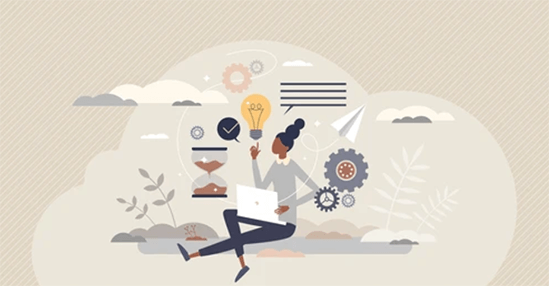If you want to improve their productivity, efficiency, and profit, then you can create a creative workflow process that can help them boost their effectiveness for a business. For those who are struggling to get their daily tasks done and come up with new ideas that can help them get ahead of the competition, there are innovative and foolproof ways to set themselves apart from the rest.
If you are stuck in a rut when it comes to brainstorming ideas, coming up with new group-think methods, and establishing new products and services for your target market, don’t worry—we have a solution for you! Check out the top features of a new brainstorming process that can significantly increase your business’s efficiency, productivity, and effectiveness in 2021!
Top features of creative workflow to boost your business in 2021!
A creative workflow is simply the process of a business team, such as design, public relations, or marketing, that occurs when coming up and producing deliverables. Deliverables are the concept of a product forming from the first stage and coming to life through the development phase of idea generation, content development, to the launch of the product or service itself.
Although creative workflows can look vastly different depending on your business sector or your company size, the idea remains the same and the goal is unanimous: to help simplify and make the process more productive without limiting the creative minds of your workers.
Define the goal of your business and of the client
One of the main features of creative workflow that can help boost your business in 2021 is helping define the scope of the project to help it fit the client’s needs exactly. If your client tells you what product or service they need and their goals for how to use the product, you can align your goal to fit with the client’s specifications.
During this stage, businesses will typically come up with the creative brief, set milestones, identify risks, research how to make their product stand out, and clarify what the client needs. By ensuring your goal matches the client’s goal, you can tailor your product or service to what the client is looking for in the industry.
Create the product or service
The second feature of using creative workflow to enhance your business is creation. This stage is the second part, where businesses will actually develop or produce the product or service for client consumption. During this phase, the business will focus on brainstorming ideas, improving similar products, creating prototypes, developing a work schedule for the workers, conducting team meetings, collaborating with other teams, tracking team times, meeting deadlines, and updating the client.
Review and approve the product
The final step of the creative workflow is to approve the product or service and have the client state their expectations and if you met their goals!
Conclusion
Using a creative workflow is an effective way to boost your business’s efficiency and productivity across the board by defining the goal, creating the product, and analyzing the end result.



